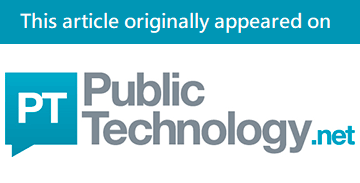The Department for Environment, Food and Rural Affairs has implemented guidelines to help assess the organisation’s efforts to tackle legacy IT and “prioritise the highest-impact activities to modernise our systems and processes”.
In a letter to the Public Accounts Committee last month, director general for strategy – and, at the time of writing, interim permanent secretary – David Hill said the “benefits framework” was developed by Defra and its core agencies, alongside the Government Digital Service.
The guidance was used during the previous spending review period, from 2022 to 2025, to help direct various initiatives representing £312m of investment and intended to address ageing technology.

This includes work on “upgrading obsolete devices and software, including removing 31,500 Windows 7 laptops from the estate and upgrading to Windows 10”, as well as “addressing over 49,000 critical vulnerabilities identified on the IT network”, according to Hill.
The strategy DG added that the framework helped in “migrating 137 legacy applications away from legacy unsupported infrastructure to modern, secure, supported environments” in addition to “closing one legacy datacentre – with advanced work [underway] to exit three more within this SR period”.
Before entering into this new four-year funding window, which runs until 2029, Defra also “completed three business cases… seeking further investment to continue fixing our legacy estate, improving our cybersecurity, and investing in a digitally enabled transformation of our services”.
Once again, the environment department will refer to the legacy benefits framework as it delivers a programme to “replace end-of-life hardware including 24,000 devices, 26,000 smartphones and network infrastructure”.
Other initiatives encompass work to “remediate and move Defra’s most business-critical legacy applications to the cloud”, as well as efforts to “focus our efforts across our highest priority cybersecurity and personnel risks”.
All these upgrades will deliver improvements to services in various areas, according to Hill, including work that will help “improve the efficiency of farming payments and overall grants and establish the Livestock Information Service to support cattle tracing”.
Other progressions will include a programme that will “replace legacy IT that supports our border control of agri-food products with a modern digital operating model, reducing delays for industry while maintaining strong biosecurity control”.
More broadly, the department intends that tackling legacy will “improve Defra’s productivity and efficiency by transforming our services, removing paper forms and investing in automation and artificial intelligence to improve customer experience and reduce costs”.
Hill’s letter was sent in response to a request made by the committee asking Defra to get in touch by May 2024 to provide details of its legacy-upgrade plans.
The interim departmental chief apologised for the delay and said that the completion of a full spending-review process “has allowed us to review progress made, assess needs and secure the first tranche of funding to deliver efficiencies in 2025-26”.
“We are now working to reflect these priorities in our business plans for the next three years,” he concluded.